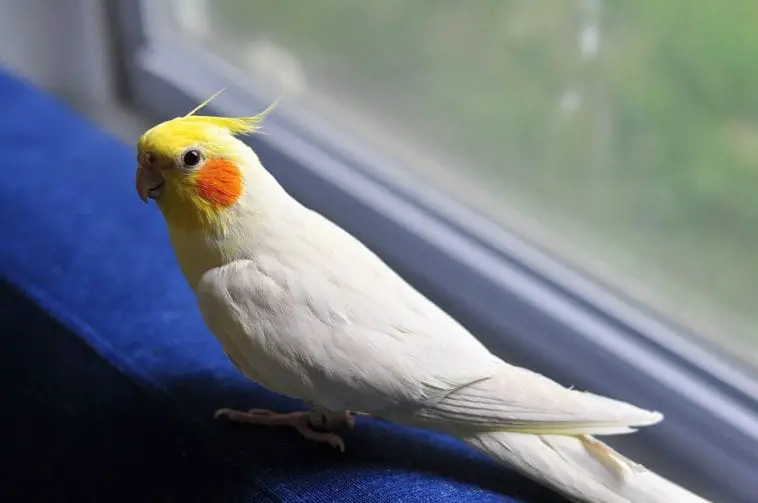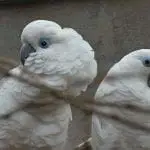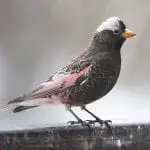Scientific Facts
| Common Name: | Cockatiel |
| Scientific Name: | Nymphicus hollandicus |
| Life Span: | 20 to 25 years |
| Size: | 11 to 15 inches (38.1 centimeters) |
| Habitat: | Deserts and scrublands |
| Country of Origin: | Australia |

Overview
The cockatiel bird is a member of the cockatoo family. They may be small, but they are an attractive member of the family that can breed for over 150 years. They come from different forms of normal grey splashed with yellow, white, and orange colors to bright yellow. The good thing with these birds is that they are not demanding, unlike the other parrots. But they still require to give them attention daily and maintain their cage. Since they are easy to breed birds, they are usually available everywhere. And that is one of the reasons why these birds are popular in the world.
Another good reason why this cockatiel is one of the most famous companion birds is that this Australian parrot is bold, and they love being cuddled. They are also curious, but there are times that they are aggressive. When they are at your home, you can hear a range of their chirps and whistles. Cockatiels are vocal birds; the calls of the male cockatiel are more diverse than of the female cockatiel. You can teach them how to sing, especially how to do melodies and speak a lot of words and phrases.
They became the no. 1 pet bird in America because they are comical, outgoing, and cuddly. Cockatiels are also talented whistlers that made the male cockatiels famous for their whistle serenades to their favorite person, object, or their mirror reflection like humans. Aside from their hobbies like whistling, foraging, and having fun around their cage, they also enjoy relaxing by cuddling to their owner’s shoulder.
Physical Description
What’s amazing with these birds is their distinguishing erectile crown that expresses their emotional state. It goes vertical when they are startled or excited, softly oblique when they are relaxed. It is compressed close to their heads when they are angry or being defensive. Their crest is usually held flat, but when they are trying to be attractive or cute, their crown extends outward in the back. Among the other cockatoos, cockatiels have long tail feathers that make up half of their total length.
The plumage of normal grey or the wild-type cockatiel is primarily grey, with protruding white blazes on the external ends of each of their wings. The male cockatiel is yellow or white, while the face of the female is mainly grey or light grey. They both feature a round orange area on their ears that is frequently stated as cheddar cheeks. The orange coloration is commonly lively in the adult males, while the females are often quite hushed. Visual sexing is habitually possible with this variant of the bird.
Since these birds breed easily, it happens that they have different color mutations. Yet they are hard to differentiate, most especially when they are still juvenile birds.
The color variants are as follows:
- Albino- feather happens to be lack of color or pale
- Lutino- these are the white birds with red eyes, cheeks are orange and have a yellow mask
- Pied- the typical color of a cockatiel is substituted with a yellow or off-white color
- Opaline- spotted with various colors that result in having pearls on their feathers
- Isabelle- feathers are colored brown or tanner color
- Silver- these are the combination of a recessive silver and a dominant silver cockatiel. The recessive cockatiel’s feathers color is gray and red eyes while dominant silver cockatiels have darker eyes and warmer tones
Cockatiels as Pets
Cockatiels need 1 to 2 hours of affection daily; you will enjoy having a bond with them, handing them, sitting in a comfortable way with them, so it is easy to pet them. They have a character as a gentle and submissive bird.
They like to feel your warmth by being held and petted because they are fond of cuddling. They simply want to be near their owners, and they probably are happy to see you. So make sure you give them an extra amount of time to bond with because they are active and playful to be with. If you are not able to be with them, suppose a friend or a companion that will do a lot of work with your cockatiels.
They are not as loud as some other birds when they are vocalizing or whistling; therefore, they are ideal for apartment living. Male cockatiels are better at mimicking than the female cockatiels. But both of them can easily pick up and can repeat sounds that they hear inside your house like phones, alarm clocks, even the other wild birds they hear outside.
They are friendly, but when they become wild, they will bite. So as a pet owner, you find a way to prevent it by just ignoring it and avoid to scold them because that can cause them to be shy around people. Reward them for performing good behavior and just ignore them for their bad behavior.
Native Region or Natural Habitat
Cockatiels’ native region is in Australia, wherein they mostly live in wilderness’ large flocks, and they are also known as quarrions or weiros. They are members of the cockatoos because they have the same structures and habits. They are easy to breed in custody. Their personalities, such as being quiet and friendly, make them fit naturally to be homed. Cockatiels cannot be exported from Australia.
They are commonly found in semi-arid areas near the water bodies. Hundreds of them gather in one body of water sometimes. They also appear in open woodlands, farmlands, savannas, orchards, spinifex, forests, and even along roadsides. Cockatiels will move in an environment that has the availability of food and water. You can see them in small flocks or pairs. They often consume cultivated crops that dismay many farmers.
Behavior or Temperament
The position of a cockatiel’s crown feathers can show you their mood. Straight-up crown feathers can mean the bird is startled or excited. The crest feathers flattened close its head is a defensive cockatiel, and if it also hisses, they might be particularly anxious. They somewhat hold back their crown feathers when they are relaxed, as well as when you hear it happily grinding their beak.
They enjoy chewing toys; therefore, it is perfect if the toys are designed to be destroyed by their small beaks. Include some pieces of paper, cardboard of softwoods, or non-toxic skin for them to chew up. They also like toys with hard-plastic essentials, like beads to swindle with.
Male cockatiels often try to find out mirrors and other reflective kinds of stuff to whistle to. A cockatiel is usually inclined to fly down from their cage or play gym onto the floor. That is why you should be extra vigilant whenever they are out of their cage to avoid stepping on them and also with the other pets like cats and dogs to not get to the birds.
While you should keep off the following areas such as the dark rooms or and enclosed areas, corner of a cabinet, or at the back of the furniture for the female cockatoos to nest in. As a signal for cockatiels, you can teach them how to whistle back to you. However, they are generally not famous for their trained tricks.
Speech and Sounds
Cockatiels often tend or prefer to whistle than talk. Some male cockatiels can learn to utter a few words and phrases, and they are more likely to talk than females. Cockatiels, on the other hand, have the habit of squeaking rather than scream. And what makes them a good apartment pet is that they have low noise volumes. If you leave the room, the cockatiel will attempt to contact you with their tweets.
Housing
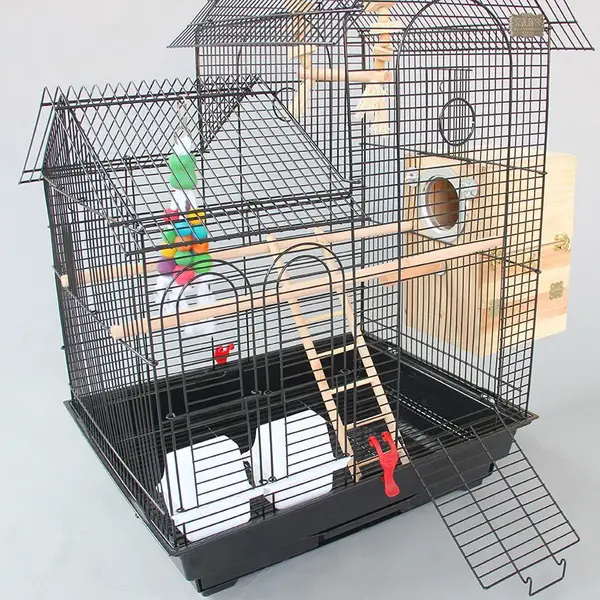
As for they are playful, they need a large cage to have space for their head crests and long tails. The larger the cage, the more relaxed it will be for the bird. The tiniest size cage for a cockatiel should be 24 inches long by 18 inches wide by 24 inches tall. And a good cage must have horizontal bars on the two sides of the cage, as hookbills love to rise. The horizontal bars support the bird to make their climbing easier. The bar spacing should be no more than 3¼4″ apart to prevent injury.
Most of the cockatiel birds can be kept at room temperature. Place your bird and its cage off of the floor and not near the areas that are drafty or open windows or anywhere that is hot places, air vents, and doorways. Some birds may have a cold like humans when they are exposed to a light wind while they are wet or after a bath, thus it is best to keep a wet bird in a war zone for at least 70 degrees until they are completely dry.
Your cockatiel’s cage should have various sizes, shapes, and textures of two or three perches for the feet of the bird will stay healthy and strong. Assure that the perches are thick enough for the bird will be able to stand comfortably onto it without dropping the balance. The smallest perch to a cockatiel should offer is 3¼ – 4 inches in diameter. Perches must be made from different types of materials such as wooden rods, natural firewood twigs, attached sand/concrete to keep their nails trimmed and ropes.
If your cockatiel bird is kept in a quiet room, you want to have a cover for the cage of your bird to help them sleep tight at night. But when your bird lives in an extra vigorous room, they might be kept awake by even just low pitched sounds that they may not get proper sleep or rest every night that my lead them to an unhealthy sleeping routine not to get the proper rest that it needs to stay healthy. Cockatiels are just like humans; they should have 8 to 12 hours of constant sleep every night. Have a smaller cage for them to sleep on and put it in a quieter room if it is not possible to keep their room quiet for the said amount of time. By having a sleep cage. You can keep your bird in a safe and quiet place to acquire a good night’s sleep.
Diet
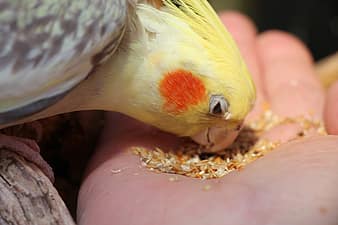
Just like the other birds, the natural diet of Cockatiels comprises nectars, fruits, veggies, insects, and a mixture of seeds that includes millet, oats, safflower, and buckwheat. For your bird to have a healthy and balanced diet, it is needed to feed them assorted foods. Daily, you can give them their pellet foods and some seed mixes. Giving them a complete seed mix or pellets doesn’t give proper nutrition and might lead to health problems in the future.
If you give them a dry diet, it is a must that you also include some fresh fruits or vegetables. The typical fruits are grapes, berries, mango, apple, and papaya. Veggies like squash, carrots, potatoes, broccoli, and those green leafy vegetables. Those mentioned can make good food for cockatiels. Make sure to wash the dishes carefully before using them and when you offer them these fresh foods and be sure not to have anything uneaten after a couple of hours so that foods do not be spoiled. Treat foods for cockatiels includes whole grains that are cooked like brown rice, multigrain bread, and cereals labeled as no sugar. Cooked eggs, particularly the boiled eggs, can do.
Determination is needed when you offer cockatiels a new type of food, especially when they are fed with pelleted and seed diet for a long time. Avoid consumption of chocolates, avocados, coffee, and salt because it may be dangerous to their health and can kill them even in a small amount.
How to Address Your Cockatiel’s Screaming
Cockatiels are not so loud birds; they are not used to screaming. But it is the bird’s way to exercise their vocalization, and it is also their way of showing they are healthy, or sometimes there might be a problem like when they are sick.
Here is how to address if your Cockatiel is screaming:
- Give no attention every time they are screaming. Once you scream back to them or just even say a single word, birds will think that you are just encouraging them to scream more.
- When they still squawk every time you leave the room for a while, you have to find a distraction to at least interrupt them from screaming. Bring some treats to their cage before you leave them or the room, so they will understand that you give them treats when you leave to stop them from screaming.
- One of the simplest ways is to just come quietly, don’t utter a word, and you should put a blanket to the cage for just 10 to 15 minutes allotted time to let them realize that you are trying to discourage them from their misbehavior.
- The best way to stop them is just to stay quiet whenever they are screaming and reward them when they stop. And if they keep screaming more and more, it is better to keep silent and ignore them too over and over.
- The last option to practice them not to scream is to teach your bird how to whisper and talk, and it is best instead of them screaming.
Teaching Your Cockatiel to Talk
Teaching cockatiels can be the best way to bond with your pets. Male cockatiels are easy to teach because they speak more, but both of them can repeat syllables and replicate words that you say and noises that they hear around them. Cockatiels may say a speech but not as clear as what a parrot can do, but you can understand it anyway.
For you to teach them more of talking. To be able to work with your cockatiel, get their attention first, talk to them, and work with them to practice their vocabulary. Teach them when they are about 8 to 10 months old so it will go easily and don’t teach them in pairs because they are less likely to talk when they are in pairs like humans that they tend to talk to each other than to learn. And it is best to train them in a room with few distractions.
Here are the things you need to consider when teaching your Cockatiel how to talk:
- Bond a lot with them to make them feel comfortable with you. Check if they can utter some words so you won’t have a hard time teaching them anymore. Repeat some words to them, and there must be one phrase at a time. The frequent you talk to them, the higher the chance it will retain to their minds. Repeating words over and over until the bird can mimic those words and phrases completely.
- Teaching them how to talk needs a long time and effort. Spoil them on their “likes.” Observe how their crown feathers move and look closer to their eyes if their pupils are getting larger, it shows that when you say that certain word means they are interested in it So focus on those to teach them easily because they want to learn to say those words. And one thing for you to know is to get their trust so they will pay attention to what you say or teach them. Because once they enjoy your company, they will not get bored or get distracted easily.
- Strengthen your bond or your lesson by giving positive reinforcement. Like for example, they can say a word clearly; then, they deserve a reward. Cockatiels deserve to be spoiled, most especially when they show you a good result of your teaching, they deserve those treats. In that way, the cockatiel will be eager to learn.
- You teach them basic greetings like hi and hello. And phrases like how are you and during the time of the day like those good mornings, happy lunch, and goodnights. Later on, you will feel different when they greeted you using those words. It is also a must to put actions in your words like come here, up here, hop, let us eat so that they can easily do things you want them to do every time you say it. Make sure not to scare the birds when you portray an action. Talk softly and move slowly.
- Either you leave them with your recorded tape while you are teaching your bird because birds love audio recorded tapes, or you buy an already made tape to play it whenever you are not around.
- Note that these cockatiels have this attitude that they will only speak to get your attention and will stop when you come near them. And cockatiels know that you will give them extra love and care when they refuse to say a word. These are some gimmicks a cockatiel can do, so be mindful if they play tricks with you.
Lessons
Do these things again and again until your bird can make certain words and actions. And after, teach them by mentioning their names so that they are aware of themselves.
- Show the bird your affection and make them feel the love and care coming from you.
- By capturing their precious hearts, you may teach them to say basic and simple words.
- When you do the act of tickling their neck or rubbing their backs, you whisper, “I love you” so that the bird will take that a token of love.
- You say “kiss” as you lean closer to them and kiss their beak, so the bird will understand you show them the love.
After teaching basic words and gestures, we can go deeper into their cognitive behavior.
You simply say phrases during the time of the day, such as good morning and goodnight, address the foods they are eating, especially their favorite ones. And teach them some of the basic actions as what you are expecting them to do like hop or come to go near you, hop and they are going to hop on their branches inside their cage, or lend them your arms and say “scratch” when you are going to do it to them. Fly, and they will spread their wings and fly either inside their cage or outside.
Now, this is the finale where you are going to let them learn while they are listening and watching. You now do the jealousy method where you do a particular action, so you catch the attention of your cockatiel. An example is when you are talking on the phone, and you will do things that will start their jealousy. Later on, you’ll see they are searching for a certain member of the family and will imitate what they have observed.
Availability: Where to Get One?
These birds can be sold in large pet stores, avian-specific retail stores, or you can go directly to a bird breeder or a rescue/ adoption organization. When you are going to adopt a bird from these sad organization, at least have an in-depth rundown of their history.
How to Care
Cockatiel needs a spacious cage to provide a room for their toys, branches, bowls, and to spread their wings freely without hitting any part of the cage. It also ideal if you have a large front door to make it easy when you return the cockatiel on their cage, especially they are fond of flying. Put a ladder on their cage since they love climbing. They are also used for foraging on the ground, so better put pieces of paper or newspapers on the floor of their cage and drop seeds and other treats for them to find. They are social birds and prosper when they are given opportunities to interact with their owner in a way like being in a room with you, stroking gently their cheeks feather and simply interacting with you.
These birds cannot be housed with other species. Therefore, you must provide them lots of toys. The toys and accessories should be made with light materials so it won’t limit the movements of your bird. They require many toys like swings, seed treats, mirrors, bells, and ladder to keep them busy and not to get bored since they can not be along with the other birds.
It is very important that every year, you should clip their wings and nails. You should learn to do it properly because they tend to bleed to death. If you can’t do it so, you can bring them to a vet or breeder and ask to groom your pet. They are also can be a danger to your households, so you should not put them near your important businesses like your gas in the kitchen gas.
Keeping Your Cockatiel Safe, Happy and Healthy
1) Variety of Diet
- A variety of food is the key to a healthy diet for any bird, including the cockatiel. Seeds are a nutritious part of their diet but are high in fat, so you should not give them a whole seed diet. Experts recommend only 30 percent of seed diet.
- Pellets are often a good choice for birds because pellets are nutritionally balanced since birds can’t pick out all their favorite seeds and might leave the rest. However, aside from both seeds and pellets, you can supply them with a wide variety of other foods that should complement their diet.
- To maintain the proper health of your bird, a variety of fresh vegetables and fruit is needed. Birds should have the determination to try new foods Persistence might be needed before your bird will try new foods, especially when their diet is only seeds and pellets. They need proteins coming from a hard-boiled egg, cooked meats, and legumes on the average amount. Also, sprouted seeds are should be a part of their diet. Foods to avoid are those that are prone to sugar like chocolates, salt, coffee, and avocados because they are toxic to your bird’s health.
2) Cage
Ensure your parrots with a wide range of cage that is sized to them so that they can spread their wings freely and exercise. Make sure it can accommodate toys, perches, and several foods.
3) Exercise
It is important for the cockatiels to go out of their cage to freely spread their wings and so that they can exercise in a free area to have a happy and quality life. Part of maintaining their physical and mental health. It is also essential to practice their socialization. If you have no time or place to free your bird from the cage, at least provide them a wide range cage to fly.
4) Socialization
Birds are naturally sociable. They enjoy being together with people; therefore, it is a must to put them in your living room where your family typically gather together. You will feel it and can see to their crown feathers when they are happy to see you all.
5) Toys and Perches
Having plenty of toys, perches, and ladders in their cage is needed for them to have a good quality playtime. They can also learn different tricks from time to time. They like it when you are challenging them, for example, from the form of bell ringing and whistling. They also enjoy talking to themselves in front of the mirror, and experts call it “the other bird.”
6) Sunlight
When cockatiel is housed, the owner must expose them to sunlight to still have their life more natural. Just as how humans need sunlight to contain themselves the vitamin D.
7) Grooming
Cockatiels are messy and result in having powder on their feathers. It can be used in their grooming, so your bird should have regularly take a bath for their routine.
8) Sleep
If you’re in a noisy place, at least have a sleeping cage and put them in a quiet room because cockatiels also have a sleeping routine of having 8 to 12 hours.
What A Veterinarian Looks for in a Healthy Cockatiel
- have open and dry nares
- show bright eyes
- displaying erect postures
- have a smooth beak and bright and well-groomed feathers
- the body’s bumps and lumps free
- sociable, active and alert
- eats and drinks properly
Common Disorders of Cockatiels
For a cockatiel sneezing for a couple of times is just normal, they just clear out the dust and small feathers from their nares. But if it frequently happens and what’s coming out from them is not clear, you should call your veterinarian to see what could be possibly wrong.
Some injuries your cockatiel can encounter are when they have broken wings, open wounds, overgrown nails and beaks, feather cysts, indigestion, colds, and many more. If not possible to contact a vet immediately, it may result in serious health problems.
However, signs of illness to be aware of are the following:
- Display a lethargic mood
- Their feathers are riffled
- Loosing of appetite resulting in weight loss
- Beaks and eyes are swollen
- Eye discharge
- Stay sitting on the floor of their cage
- Frequent sneezing or coughing
- The unusual color of stools
Treating Beak and Feather Disease
Recognizing the Symptoms
- If there might be bleeding, and if the feathers on the wings and tails easily fall out
- If they have a problem with their flying activity, the bird is infected.
- You look out if their tails have some yellow patches because it is a sign that they are infected. Knowing the coloration of your bird is a must.
- There might be a problem if they stop with their vocalization or excessive screaming.
- Secondary symptoms such as vomiting, difficulty eating, weight loss, and green mucous should be monitored.
- See for fracture or brittleness of their beak, if there is, have your bird go on a test.
Treatment/Prevention
- Separate the infected birds in a distance to avoid the healthy ones from being harmed.
- Provide them supplements to somehow stop the infection.
- Put an infrared light on one side of their cage with a 25 to 35 degrees Celsius for 24 hours completely day and night.
- Take them to a vet to treat the secondary infections.
Preventing Psittacine Beak and Feather Disease or PBFD
Psittacine Beak and Feather Disease are caused by a simple virus, infecting and killing the cells of the feathers and beak of the cockatiel. Also, the virus attacks the immune system.
Here are some tips to avoid PBFD:
- Quarantine new arrivals for 2 months.
- Disinfect your house by cleaning the whole area and applying a concentrate.
- Free your home from the dust where diseases can be transmitted.
- Materials that are used in cleaning must be thrown away.
- If possible, have your birds vaccinated.
FAQ Section
Is a cockatiel a good pet?
Yes, and that made them one of the most popular pet birds in the world.
Can cockatiel speak?
They are a type of parrot, which entails that they are all capable of mimicking words, do whistle and vocalize sounds.
Are cockatiels smart?
They are really smart. You can teach them how to talk and do some tricks.
Do cockatiels like to cuddle?
They like interacting with humans. They love to cuddle and scratch with you if they are already comfortable with you around them.
Are cockatiels good for beginners?
Yes, if they are still babies, they have a good personality and tend to be more trainable and friendly.
What is the friendliest pet bird?
Cockatiels are rated number 1 as the friendliest pet birds.
Can cockatiels be left alone?
Yes, they can live alone because they can’t be with other birds. But with that, cockatiels surely need extra attention from their owners.
Do cockatiels recognize their owners?
Yes, they are a buddy of their owners, just like how cats and dogs towards their owners.
Do cockatiels like to be petted?
Yes, they would love to. And you will surely enjoy their good personality.
Do cockatiels smell?
Only if you stick your nose to them, you can smell their mild and pleasant scent. But a wet bird smells as bad as a wet dog.
Are cockatiels aggressive?
Not at all times. They just become aggressive when they are frustrated. They are most likely to bite a mate when they are not behaving properly.
How do I play with my cockatiel?
Cockatiels enjoy music and dancing with you and playing hide and seek.
How do cockatiels show affection?
They show affection by playing with your hair and grooming your brows. You will feel that they are gentle, unlike the other birds that are painful when they do such things.
Do cockatiels bite a lot?
Cockatiels are easily frightened, and they do not change very well. They bite when they are frightened, and they even bite harder when they are terrified; therefore, you should build a strong relationship with them to address them their common mistake, such as biting.
Why do cockatiels puff up?
They usually puff up and shake their bodies because it is their way to release tension out from their body and be relaxed.
Will a cockatiel fly away?
They fly high because these birds are strong fliers. They can usually travel long distances but can not find their way back home.
Can cockatiels drink milk?
No, they can’t tolerate having lactose in their bodies. Their systems can’t process milk like how mammals can do.
Why is cockatiel angry?
They show their anger when they are sick or when they feel uncomfortable.
How long can a cockatiel be left alone?
You can leave them for 7 to 8 hours long while you are at your school or work. You can also leave them as long as you want forasmuch as they have food and water, you can leave them as long as you want.
How much do cockatiels poop?
Usually, they poop every 15 minutes, so you should have a newspaper on the floor of their cage so it will be easy to remove their dirt.

